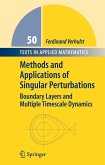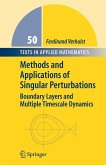In the study of mathematical models that arise in the context of concrete - plications, the following two questions are of fundamental importance: (i) we- posedness of the model, including existence and uniqueness of solutions; and (ii) qualitative properties of solutions. A positive answer to the ?rst question, - ing of prime interest on purely mathematical grounds, also provides an important test of the viability of the model as a description of a given physical phenomenon. An answer or insight to the second question provides a wealth of information about the model, hence about the process it describes. Of particular interest are questions related to long-time behavior of solutions. Such an evolution property cannot be v- i?ed empirically, thus any in a-priori information about the long-time asymptotics can be used in predicting an ultimate long-time response and dynamical behavior of solutions. In recent years, this set of investigations has attracted a great deal of attention. Consequent efforts have then resulted in the creation and infusion of new methods and new tools that have been responsible for carrying out a successful an- ysis of long-time behavior of several classes of nonlinear PDEs.
From the book reviews:
"The monograph investigates von Kármán evolution equations from the point of view of the existence and uniqueness and asymptotic behavior of a solution. ... The monograph is nicely written and contains results based on new developments in the subject. It can be recommended to experts working in partial differential equations and dynamical systems and also to physicists and engineers interested in the asymptotic analysis of dissipative systems arising in continuum mechanics." (Igor Bock, zbMATH, Vol. 1298, 2014)
"The authors present an in-depth account of the state of the art in the field ... . The book presents in a self-contained and comprehensive manner all necessary analytical tools as well as a wealth of applications. Many of the results included in this volume are either available for the first time in book form or are even entirely new. Without doubt it will set the standard for the field for years to come." (M. Kunzinger, Monatshefte für Mathematik, Vol. 167 (1), July, 2012)
"This almost 800-page monograph ... is probably the most detailed treatise ever written on the von Karman evolution equations ... . The appendix provides the necessary background and preliminary material used throughout the book. The book contains a number of original results that appear in print for the first time. ... All the mathematical methods and asymptotic models discussed in the book were developed with real physical and engineering problems in mind. ... can be a solid basis for further finite element numerical analysis." (Alexander Figotin, SIAM Review, Vol. 53 (3), 2011)
"The monograph investigates von Kármán evolution equations from the point of view of the existence and uniqueness and asymptotic behavior of a solution. ... The monograph is nicely written and contains results based on new developments in the subject. It can be recommended to experts working in partial differential equations and dynamical systems and also to physicists and engineers interested in the asymptotic analysis of dissipative systems arising in continuum mechanics." (Igor Bock, zbMATH, Vol. 1298, 2014)
"The authors present an in-depth account of the state of the art in the field ... . The book presents in a self-contained and comprehensive manner all necessary analytical tools as well as a wealth of applications. Many of the results included in this volume are either available for the first time in book form or are even entirely new. Without doubt it will set the standard for the field for years to come." (M. Kunzinger, Monatshefte für Mathematik, Vol. 167 (1), July, 2012)
"This almost 800-page monograph ... is probably the most detailed treatise ever written on the von Karman evolution equations ... . The appendix provides the necessary background and preliminary material used throughout the book. The book contains a number of original results that appear in print for the first time. ... All the mathematical methods and asymptotic models discussed in the book were developed with real physical and engineering problems in mind. ... can be a solid basis for further finite element numerical analysis." (Alexander Figotin, SIAM Review, Vol. 53 (3), 2011)
From the reviews: "This almost 800-page monograph ... is probably the most detailed treatise ever written on the von Karman evolution equations ... . The appendix provides the necessary background and preliminary material used throughout the book. The book contains a number of original results that appear in print for the first time. ... All the mathematical methods and asymptotic models discussed in the book were developed with real physical and engineering problems in mind. ... can be a solid basis for further finite element numerical analysis." (Alexander Figotin, SIAM Review, Vol. 53 (3), 2011)








